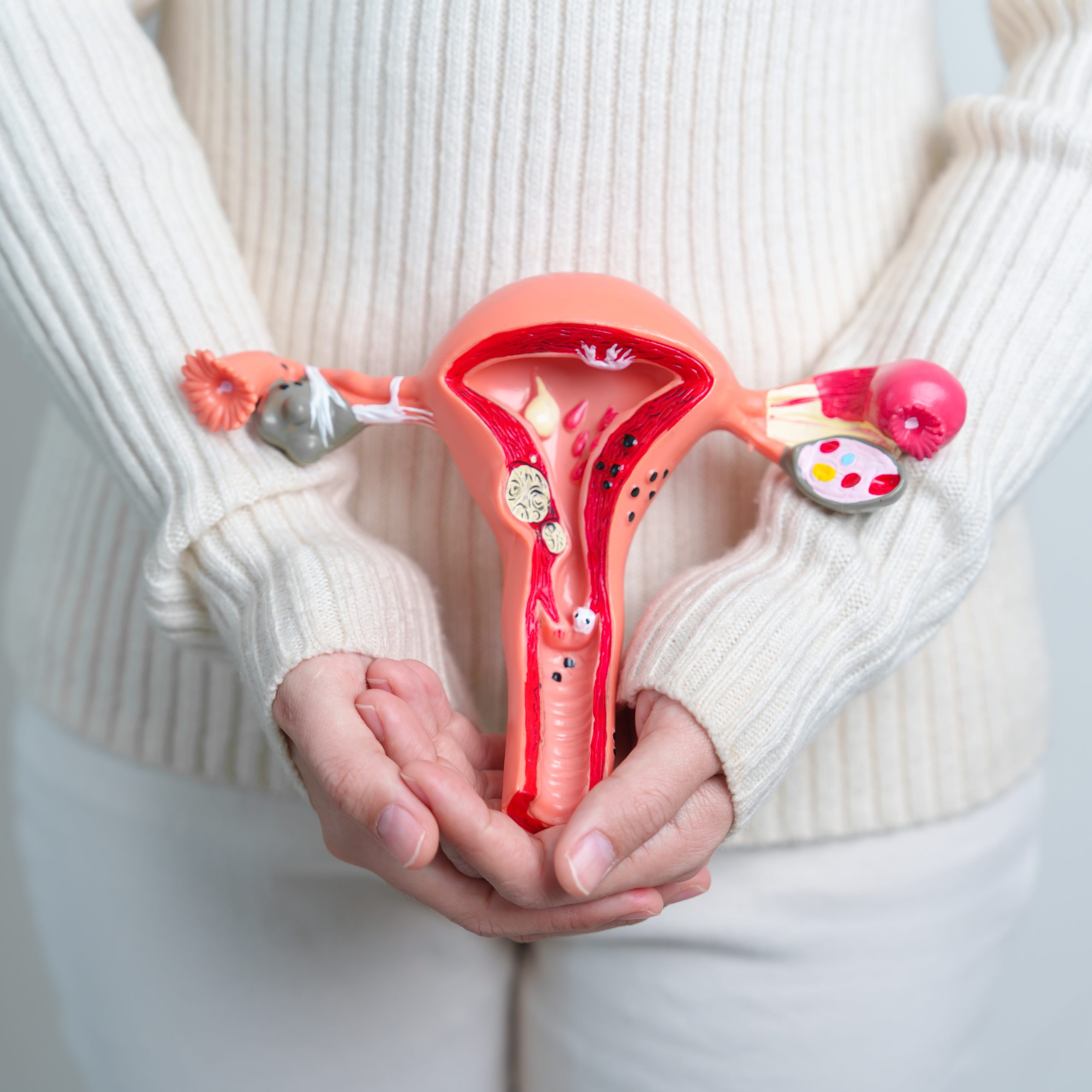A gynecology procedure to prevent cervical cancer.
The doctor’s office calls a few days after your annual pap smear. This can’t be good news. They say you have an “abnormal” pap smear. You get scheduled for a diagnostic procedure called a colposcopy to rule out cervical cancer.
Before you hit the panic button, let’s break exactly what you need to know about a colposcopy procedure.
A colposcopy is a common office procedure that follows an abnormal pap smear. Using a microscope, doctors examine the magnified cervix to identify abnormal cervical tissue to prevent cervical cancer.
Precancerous cells are caused by HPV, the human papillomavirus.
80% of Americans will contract HPV, making it the most common sexually transmitted infection. HPV causes genital warts, and persistent strains lead to cervical, vaginal, anal, throat, and neck cancer. Despite screening programs, 4,000 US women die from HPV related cervical cancer annually.
Cervical screening through pap smear is how women’s health practitioners detect HPV effects. Paps smears are the first step in cervical cancer prevention.
A pap (Papanicolaou) smear is a screening test for cervical cancer. The cervix is the opening of the uterus located at the back of the vagina. During a pap smear, doctors place a device called a speculum into the vagina. This allows the walls of the vagina to be spread apart allowing visualization of the cervix.
Cervical cells are then collected using a small brush. These cells are sent to a lab for analysis. The cells are processed under a microscope to evaluate for precancerous changes called cervical dysplasia.
The goal of pap screening is to detect abnormal cervical changes so we can intervene long before cervical cancer develops.
When someone has an abnormal pap smear, the next step is a diagnostic procedure called a colposcopy.
A colposcopy is an office procedure that allows your doctor to visualize the cervix more closely using a microscope. The colposcope identifies abnormal cervical tissue that cannot be seen with the naked eye.
Areas of the cervix concerning for pre-cancer or cancer can then be biopsied (sampled) during the exam.
If the biopsy shows a precancerous lesion then, your healthcare provider may recommend a LEEP (loop electrosurgical excision procedure.)
Where is a colposcopy procedure performed?
A colposcopy procedure is performed in an office setting.
Can my family come with me?
Colposcopy procedures are performed in a medical office setting. A trusted family member should drive you to and from the appointment.
Does my procedure require an anesthetic?
Anesthesia is not typically required for a colposcopy procedure. The colposcopy itself with not hurt. If biopsies are taken, you will feel a small “pinch” but otherwise should not feel any pain. Some physicians spray a topical anesthetic directly onto the cervix. Occasionally local anesthesia can be provided via a paracervical anesthetic.
A paracervical block is an anesthetic technique done by a gynecologist to numb the uterus. Medication is injected into the cervical tissue to reduce pain during surgery.
Some gynecologists recommend oral medication to reduce anxiety.

Photo by Kinga Cichewicz on Unsplash
What’s the procedure when I check-in?
Most procedures will involve a preoperative visit with your surgeon. The risks and benefits of the procedure will be discussed in detail and questions regarding your procedure are discussed.
The consent form is reviewed, signed, or updated with any changes.
Because a colposcopy is performed in an office setting, the experience will feel like a normal office visit. After checking in, you will be taken to a procedure room. The medical assistant will prepare the room and provide a gown or leg coverings. When all is prepared, your surgeon will come and review any last-minute questions..
What happens in the procedure room?
Your surgeon will help position your legs into the stirrups. A speculum is placed into the vagina to allow visualization of the cervix, the opening of your uterus located at the back of the vagina.
The provider will position the colposcope (microscope) to allow visualization of the cervix. A chemical called acetic acid is applied to the cervix. Acetic acid, also known as vinegar, is applied to the cervix. (We call it acetic acid so we can sound smarter).
Cells infected with HPV will absorb this chemical causing them to turn white. During the colposcopy, the doctor will see these characteristic changes, and any abnormal areas are may be sampled.
After the biopsy, a drying chemical called Monsel’s solution is painted onto the cervix to prevent bleeding later on. This chemical is messy and will cause a brown, coffee-ground vaginal discharge over the next few days.
How long will I be in the operating room?
Once the patient enters the procedure room a series of safety steps must occur.
A colposcopy procedure takes approximately 2–5 minutes. This includes the surgical time as well as accounting for positioning, the speculum insertion, a paracervical block anesthetic, and removal of the instruments.
When can I go home?
After an office-based colposcopy procedure, patients may go home after getting dressed as long as you are feeling normal.
Postoperative recovery time will vary from person to person.
Colposcopy procedures require a minimal amount of recovery. Patients may leave as soon as the procedure is complete.

What is the usual recovery time
You should be able to resume all work and household activities on the same day as your procedure. You should expect to feel a little vaginal soreness for 2–3 days. Mild uterine cramping is also common. Some patients will require mild pain medication like NSAIDs.
It is wise to wear a sanitary pad for a few days as you may experience vaginal spotting or dark vaginal discharge.
You will be instructed to abide by pelvic rest for approximately one week. This includes no douching, no sex, and no tampons.
You should call your doctor if you experience heavy vaginal bleeding, fevers, or worsening abdominal pain.
What aftercare is required?
Most women should be able to return to normal daily activities the same day. You should speak with your physician regarding the resumption of sexual activity. Typically, the recommendation is to avoid vaginal intercourse for 1–2 weeks.
You should not use tampons for up to seven days after the procedure to reduce the potential risk of infection.
Light bleeding, spotting, and brown or black discharge is common and expected. Sanitary napkins are advised.
Your doctor will schedule a postoperative examination to evaluate your cervix 1–2 weeks after the procedure. The cervical specimen pathology report will be reviewed during this visit.
If cervical dysplasia is proven on the biopsy, your doctor will discuss the next steps. If the biopsy is normal or mild cervical dysplasia is found, a follow-up pap smear will be scheduled. If moderate or severe cervical dysplasia is identified, the provider will discuss treatment options.
Danger Signs to look out for after the procedure
After a colposcopy procedure, we expect light spotting and vaginal discharge.
If you experience heavy bleeding, abdominal or pelvic pain, a fever, or pain that increases over time beyond 24 hours, call your physician. After any surgery contact your physician if you meet any of the following criteria:
- Pain not controlled with prescribed medication
- Fever > 101
- Nausea and vomiting
- Calf or leg pain
- Shortness of breath
- Heavy vaginal bleeding
- Foul-smelling vaginal discharge
What should I pack at home to take with?
Nothing special is required after a colposcopy procedure. A supply of sanitary napkins will help keep your clothing clean.
What information should I provide to my doctors and nurses?
It is very important to provide your doctor with an updated list of all medications, vitamins, and dietary supplements prior to surgery. All medication and food allergies should be reviewed. Share any lab work, radiologic procedures, or other medical tests done by other healthcare providers with your surgeon prior to your procedure.
For more information, check out my video explanation of colposcopy basics.
Image Dr. Jeff Livingston/ Youtube
Thank you to BeingWell for publishing this article on Medium.
Blog Author: Dr. Jeff Livingston
Main Blog Photo By: Priscilla Du Preez on Unsplash












